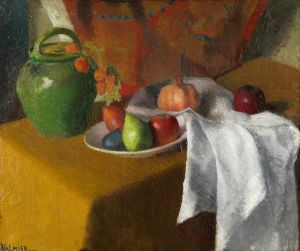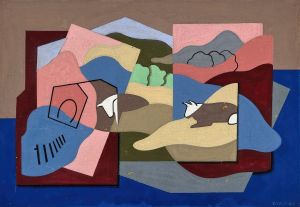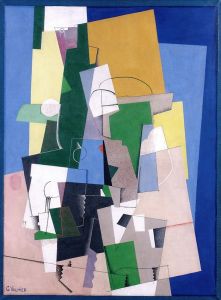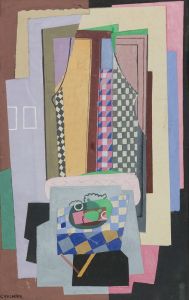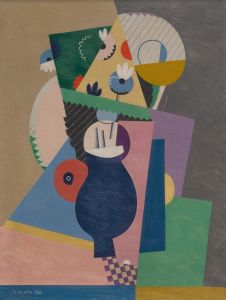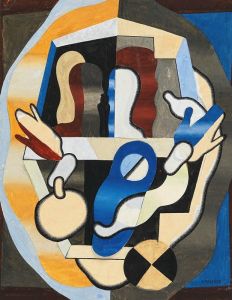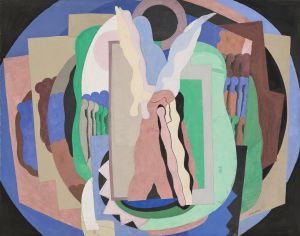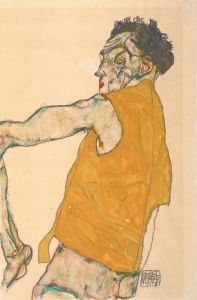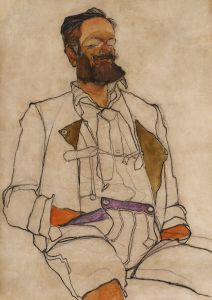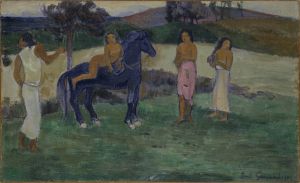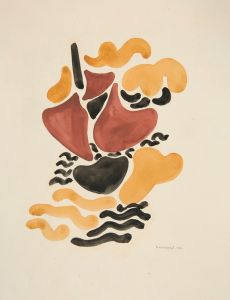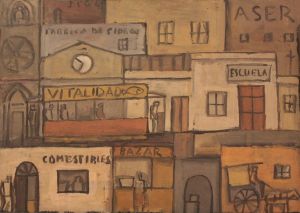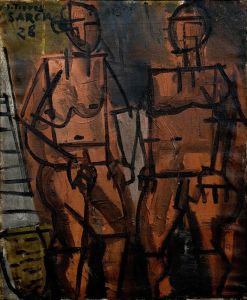
Composition
A hand-painted replica of Georges Valmier’s masterpiece Composition, meticulously crafted by professional artists to capture the true essence of the original. Each piece is created with museum-quality canvas and rare mineral pigments, carefully painted by experienced artists with delicate brushstrokes and rich, layered colors to perfectly recreate the texture of the original artwork. Unlike machine-printed reproductions, this hand-painted version brings the painting to life, infused with the artist’s emotions and skill in every stroke. Whether for personal collection or home decoration, it instantly elevates the artistic atmosphere of any space.
Georges Valmier was a French painter known for his contributions to the Cubist movement in the early 20th century. Born on April 11, 1885, in Angoulême, France, Valmier's work is characterized by its vibrant colors and geometric abstraction. He studied at the École des Beaux-Arts in Paris and was influenced by the works of Paul Cézanne and the Cubist innovations of Pablo Picasso and Georges Braque.
Valmier's painting "Composition" is a notable example of his mature style, which combines elements of Cubism with a distinct sense of color and rhythm. While specific details about the painting "Composition" may vary, Valmier's works from this period typically feature a complex interplay of shapes and colors, creating a dynamic and harmonious visual experience.
In "Composition," Valmier employs a palette of bold, contrasting colors, often using primary colors alongside black and white to create a sense of depth and movement. The painting is likely composed of overlapping geometric forms, such as circles, rectangles, and triangles, which are characteristic of Valmier's approach to abstraction. This method reflects the influence of musical composition, as Valmier often sought to create visual equivalents to musical harmony and rhythm.
Valmier's work is part of a broader trend in early 20th-century art that sought to break away from traditional representation and explore new ways of seeing and experiencing the world. His paintings are often seen as a bridge between the analytical Cubism of Picasso and Braque and the more decorative, colorful approaches that would later be associated with movements like Orphism and Synchromism.
Throughout his career, Valmier participated in several important exhibitions, including the Salon des Indépendants and the Salon d'Automne in Paris. His work was well-received by his contemporaries, and he was associated with other avant-garde artists of the time. Despite his contributions to the development of modern art, Valmier's work was not as widely recognized during his lifetime as some of his peers. However, his paintings have since gained appreciation for their innovative use of color and form.
Georges Valmier passed away on March 25, 1937, in Paris, but his legacy continues through his vibrant and dynamic compositions. His work is included in several major public and private collections, and he is regarded as an important figure in the history of modern art. Valmier's "Composition" exemplifies his unique approach to painting, blending the structural rigor of Cubism with a lyrical sense of color and movement, making it a significant piece within his oeuvre and the broader context of early 20th-century art.





